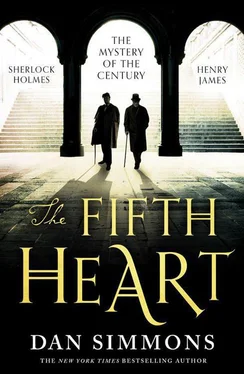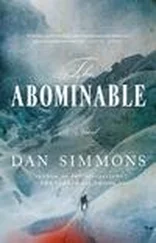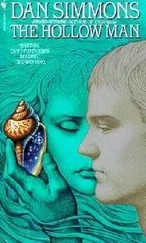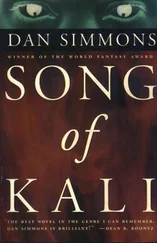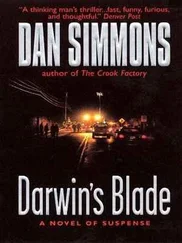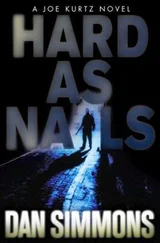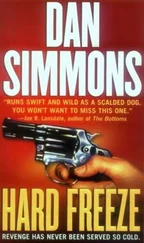Quiet until now, Holmes suddenly started playing the part of tour guide.
“There are fourteen of those so-called Great Buildings in the White City. The huge one we’re approaching now is called the Manufactures and Liberal Arts Building and encloses one point three million square feet of space. The roof itself is a clear span some three hundred sixty-eight feet long and two hundred and six feet high. It alone had thirteen acres of surface to paint. Besides the Great Buildings, there are two hundred more buildings in the White City, including one representing each of the forty-seven states in the Union plus all territories.”
James smiled, amused at having his own tour guide with a British accent. Some were edging closer along the railing to hear what Holmes was saying.
“When President Cleveland turns on the switch on the first of May,” continued Holmes, either not noticing or simply ignoring the other listeners, “the White City’s dynamos will provide three times the total amount of electric power available in Chicago and more than ten times that provided for the eighteen eighty-nine Paris Exposition. The White City has more than a hundred and twenty thousand incandescent lights, and seven thousand arc lights to illuminate its boulevards, grounds, pathways, and fountains. There will be very few if any dark corners in the White City and the designers have hired their own police force—the two thousand members of the Columbian Guards—not only to apprehend those who have committed crimes or disturbed the civic peace but to stop those crimes before they occur. No other city in Europe or America has what I consider so enlightened a law-enforcement policy.”
“What’s the huge but ugly and unfinished thing there, some distance north and a bit west of the big Manufactures Building?” asked James, gesturing with his walking stick. “It looks as if they are building the hull for Noah’s Ark.”
“That’s to be the White City’s answer to the Eiffel Tower that was such a hit at the Paris Exposition,” said Holmes. “A certain Mr. Ferris is building a giant Wheel that theoretically will carry up to forty people in each of its thirty-six railcar-sized viewing cabins. The passengers will ascend some two hundred sixty-four feet into the air at the height of each revolution, giving—Mr. Ferris and the White City designers promise—an amazing view of Lake Michigan, the White City including the Midway Plaisance with all of its other diversions, and the Chicago skyline. What you see there is only the framework of the bottom half of the huge Wheel. They’ll soon be bringing in and mounting an axle that I’m told is the heaviest piece of steel ever constructed on this continent. The axle shaft will be some forty-five feet long and will weigh forty-six tons and will have to be strong enough to bear a burden of the Wheel’s own steel, carriages, and people that will amount to six times the weight of some cantilever bridge across the Ohio River at Cincinnati that you Americans seem so proud of. The White City people and Mr. Ferris keep promising that the great Wheel will be finished and carrying passengers by the middle of the summer, if not earlier.”
“Where did you get all this information, Holmes?” said James. “All these facts and figures don’t sound like you.”
Holmes turned his back on the White City, leaned back against the railing, and smiled. “It’s true that I’m often arithmetically challenged, as my brother Mycroft has pointed out on far too many occasions. But I had a private tour yesterday while you were in the hotel talking to the ailing Mr. Clemens and even a dullard can remember certain facts for a short period of time. It’s how one passes through Cambridge or Oxford with Honors, as I’m sure you know.”
James watched the White City as the Columbus made a wide, cautious arc around the 2,500-foot-long pier extending into Lake Michigan, its surface covered with workers and carts as the linear and then circular Movable Sidewalk took its final shape down the center of the wide pier.
“It will cost ten cents to ride on the Sidewalk the length of the pier where the steamers will drop you the half-mile to the entrance of the Exposition,” said Holmes without turning around to look at it. “My guess is that most first-time visitors will try it just for the novelty.”
James marveled at the tidy lagoons and carefully groomed streams that ran through the entire White City. Someone had turned a muck-ridden swamp into a cleaner, wider, airier version of James’s beloved Venice.
“All in twenty-one months,” said James as if reading the author’s mind. “Where then will President Cleveland be doing his opening speech and switch-turning?”
Holmes turned and pointed with his own stick. “Do you see through the pillars or the Peristyle to that dome rising at the far end of the Lagoon—right in line with that canvas-shrouded tall pedestal that will be revealed as Saint-Gaudens’s huge Statue of the Republic? Yes, the one with the four pavilions, one at each corner. That is the Administration Building where the president and other dignitaries will speak. They will be facing this way—east, toward the Lake and the statue—and one assumes that all the concourses will be flooded with excited American humanity, all the way back to the Peristyle gates.”
Holmes handed James a small, folding telescope. The author put the object to his eye, brought the dome into focus, and said, “Are those angels on the upper promenade of that Administration Building . . . right below the dome?”
“Eight groupings of angels, actually,” said Holmes. “All trumpeting the victory of Peace, although I fear they may be a bit overly optimistic about that reality. Besides hundreds of incandescent lights outlining the upper reaches and dome of the Administration Building at night, that upper promenade you’re looking at is ringed with those huge gas torches designed to illuminate the golden dome.”
“Good heavens,” said James, turning his telescopic gaze on the myriad of what looked like huge marble palaces, each festooned with its own multitude of statuary, pinnacles, towers, arches, entablatures, and wildly decorated friezes. “I’m surprised that the denizens of Chicago won’t wish to move into the White City once the Exposition is over,” he said softly.
“They’d be out of a home after a winter or two, or even after a few months of strong Chicago rainstorms,” said Holmes.
James lowered the telescope. “What do you mean?”
“While there’s plenty of steel and iron—more than eighteen thousand tons of those metals in the Great Buildings alone, I’m told—not to mention wood, most of what looks like white marble to you is actually made of staff.”
“Staff?”
“That’s what it’s called,” said Holmes. “Evidently it’s an exotic composition of plaster, cement, and hemp—or some similar fibrous material—that was sort of painted on or sprayed on to look like permanent stone. All of the Great Buildings, most of the State Buildings, and a vast majority of the statuary and bas relief you see is made of staff . . . in its semi-liquid form a very plastic material, I understand. And lighter than wood. Still, they used more than thirty thousand tons of the stuff to create most of the White City’s structures.”
“Not meant to be permanent?” asked James with a strange pang of disappointment. He found himself, against all reason and odds, taking pride in what his fellow Americans had created in so short a time.
“No,” said Holmes, “although if painted regularly, it might last several years. Left to the elements, all those amazing structures you’re admiring are going to melt and rot like Miss Havisham’s wedding cake in a year or less.”
James handed back the telescope, which Holmes folded and set in his large outer pocket. The Columbus made a wide easterly arc and headed back along the shoreline toward the Black City. He was thinking that no nation was better at creating metaphors for itself than America; in this case, the vision of a beautiful, sane, safe, marble future that is all dream and no marble to sustain it.
Читать дальше
